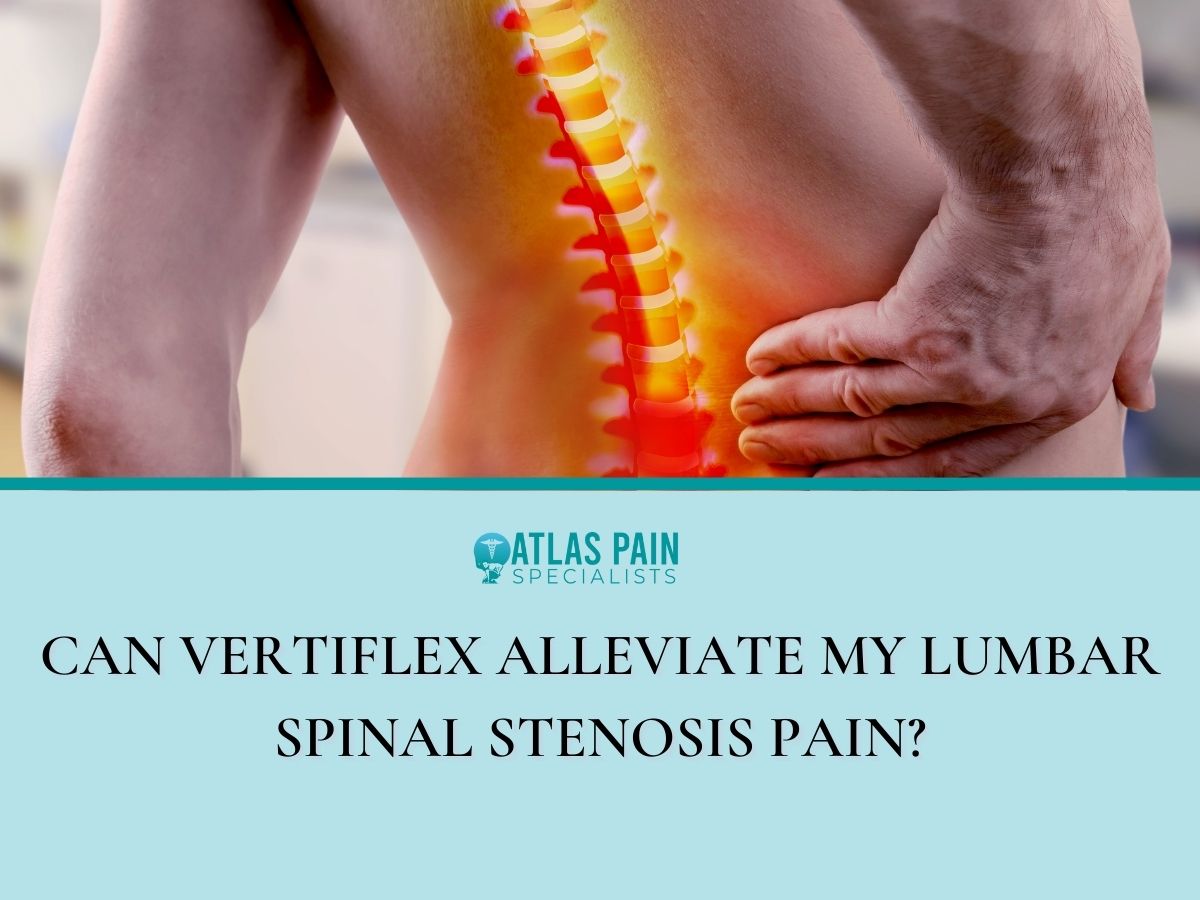

Can Vertiflex Alleviate My Lumbar Spinal Stenosis Pain?
Lumbar spinal stenosis (LSS) is extremely painful. There are a variety of treatment options to choose from with the newest being the Vertiflex Superion® implant. First, you must explore your non-surgical treatment options.
What Is Lumbar Spinal Stenosis?
As we age, the joints in our spine begin to break down. This degeneration can lead to a variety of pain-inducing conditions, including bone spurs, enlarged joints, bulging discs, and the thickening of spinal ligaments. Each of these conditions reduces the amount of space that surrounds the spinal cord.
The spinal cord is protected by a spinal canal, and as the space between the spinal cord is minimized—it can lead to lumbar spinal stenosis. While you can develop LSS anywhere in the back it is most common in the lower back.
What Are The Symptoms of LSS?
An X-ray, MRI, or CAT scan are required for diagnosis, but symptoms often include:
- Extreme lower back pain
- Extreme pain anywhere in the back
- Shooting pain in the back or legs
- Numbness or tingling in the leg or foot
- Weakness in the leg or foot
What Are The Treatment Options For LSS?
Your pain management specialist will begin exploring your non-surgical treatment options. This includes any combination of:
- Prescription medications for pain and inflammation
- Steroid injections
- Nerve-block injections
- Physical therapy
- Chiropractic adjustments
- Acupressure
Surgical treatment options include:
- The minimally invasive Vertiflex Superion® implant surgery
- Spinal fusion, which is a major surgery
- Laminectomy, which is a major surgery
What Is The Vertiflex Superion® Implant?
The Vertiflex Superion® is an FDA-approved spinal implant. It is an option your physician may discuss with you when non-surgical options have failed.
Instead of fusing the spine together, the implant restores the disc space between the vertebrae. With less pressure on the spinal cord, nerve pain can be drastically reduced—maybe even eliminated. How it differs is that it is a fast outpatient procedure, and it will maintain the range of motion within your spine. However, it still leaves the door open for spinal fusion if conditions worsen.
What Does Vertiflex Surgery Entail?
This is an outpatient procedure performed under local anesthesia. The affected area of the spine is numbed, then a small ½ inch incision is made. A tube the diameter of a dime is inserted in the spine to provide the dilation required to place the implant without cutting through additional tissue. With spinal fusion, far more cutting is required. Your surgeon will use a real-time x-ray device to ensure they can see where they are working.
The implant is placed, and the “wings” are adjusted to spread your vertebrae, returning them to a natural position. Then the implant is secured, and your incision is sutured closed. The entire process takes between 20 and 30 minutes, and your incision is covered with a bandage that is approximately the size of a band-aid.
Most patients feel a reduction in pain within the first few days. Full recovery takes about 6 weeks and physical therapy will be required. However, light activity such as walking is often permitted. For optimal long-term results, ongoing core strengthening exercises are required.
How Long Does The Vertiflex Implant Last?
Results are long-lasting, with 80% of patients still pleased with their results 5 years after their implant. Additional results include:
Are You A Candidate For The Vertiflex Implant?
If you have lumbar spinal stenosis and non-surgical treatments have failed, you may be a candidate for the Vertiflex implant. If you live in the Phoenix area, we invite you to reach out to Dr. Ormond of Atlas Pain Specialists. Improving your quality of life by minimizing your pain with personalized treatment is Dr. Ormond’s passion. Reach out today to learn more!
About Dr. Sean Ormond



